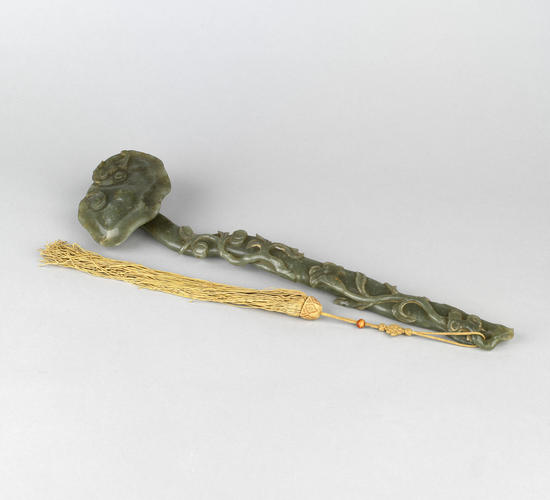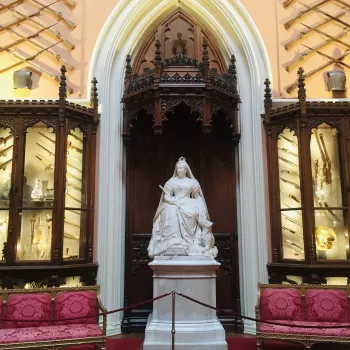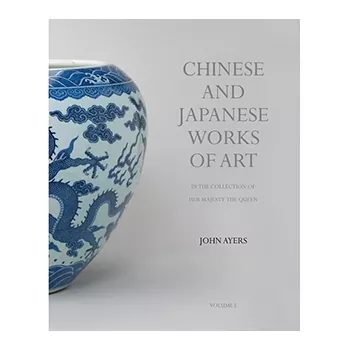Ruyi sceptre eighteenth century
Nephrite jade, silk | 34.0 x 10.0 x 2.7 cm (excluding fittings) | RCIN 23692
-
The ruyi sceptre with undulating shaft and turned-over head. The shaft carved in relief with a lingzhi spray, and the head with a bat; the bottom pierced for attaching the yellow silk tassel, with a spray of lily, the bloom hollowed to hold a gemstone, and a fruit spray.
The ruyi sceptre with head in the form of the sacred lingzhi fungus was a time-honoured symbol of authority; for examples made in other materials in the Collection- see in carved red lacquer (RCIN 10805) and cloisonné enamel (RCIN 11701).
Text adapted from Chinese and Japanese Works of Art in the Collection of Her Majesty The Queen: Volume III.Provenance
Acquired by Queen Mary before 1920. Listed in Queen Mary's Bibelots Vol. I no.382 and Queen Mary's Private Property Vol. III no. 55.
Possibly one of a number of ruyi originally presented to members of Lord Macartney’s Embassy of 1792–4. A very similar ruyi, presented to Sir George Staunton, 1st Baronet (1737–1801), second-in-command of the mission, was subsequently bequeathed by him to the Royal Asiatic Society and donated in 1925 to the Victoria and Albert Museum (Mus. No.A.17–1925). -
Creator(s)
(nationality)Acquirer(s)
-
Medium and techniques
Nephrite jade, silk
Measurements
34.0 x 10.0 x 2.7 cm (excluding fittings)
64.8 x 10.0 x 2.7 cm (loop, tassel etc extended)
Category










